How “Where the Crawdads Sing” Production Designer & Cinematographer Captured Nature’s Challenging Splendor
After delighting in the alluring visual tapestry throughout director Olivia Newman’s adaptation of the beloved novel Where the Crawdads Sing (in theaters now), you might find it hard to believe production faced a crippling onslaught of rain. So much so, that it flooded the practical set of protagonist Kya’s (Daisy Edgar-Jones) home.
Production designer Sue Chan, whose work includes Shang-Chi, Gone Girl, and Punch Drunk Love (the latter two as supervising art director), mentions they struggled to “keep the landscape from turning into a muddy bog.” But before the crew stepped onto the marshy Louisianan terrain, where much of the film was shot, Newman, Chan, and cinematographer Polly Morgan (Lucy in the Sky) started to pin the painterly aesthetics early in prep.
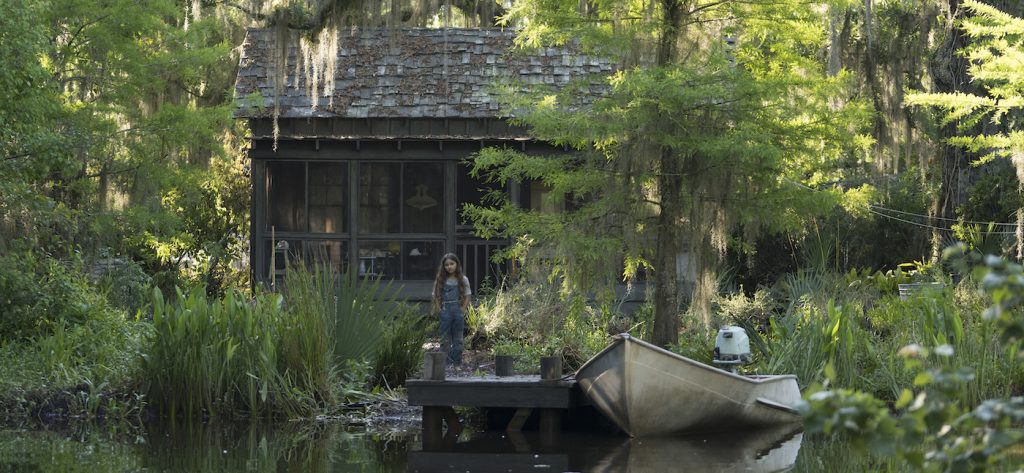
Both Chan and Morgan connected deeply with the novel by Delia Owens (screenplay by Lucy Alibar). For the cinematographer, she says she was “instantly united” with the director in terms of approach. “I put together a pitch deck and a lot of my references were the same as the ones she put together to get the job,” says Morgan. “We shared the same vision on how the story would be told.”
In exploring the journey – which is a coming-of-age tale where a young girl fends for her survival in the Louisiana swamp circa the 1960s – the trio keyed in on the idea of transformation. Not only did they seek to illustrate the changes Kya experiences but extend it to her environment, especially her family home.
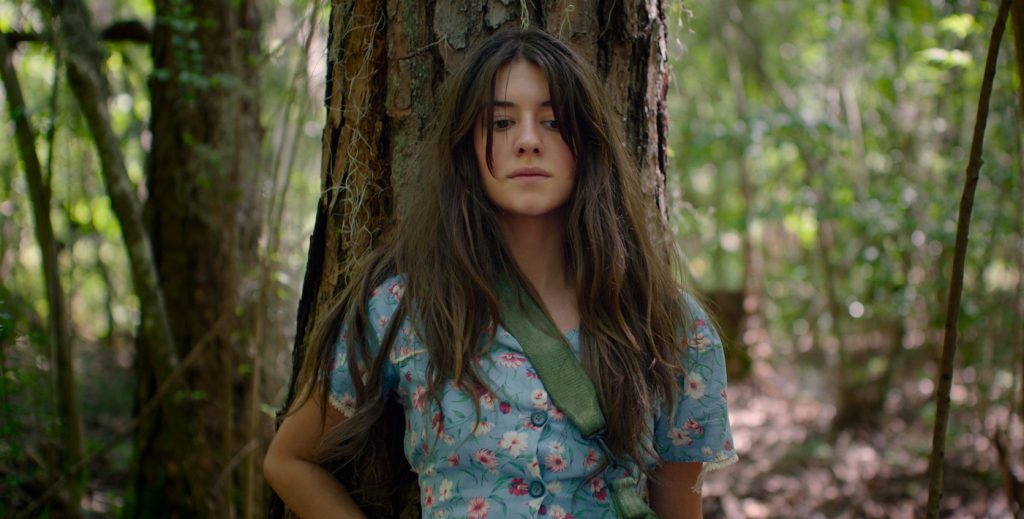
“Kya goes through a big arc in what happens to her and her family. She is sort of frozen in this natural state once her family leaves and the whole natural world becomes her family. We wanted the feeling of everything being absorbed into her home,” notes Chan. “Then when she starts to become a member of society, rather than blossoming, she sort of retreats the way an animal would. We sort of wanted to illustrate that in how you see her house evolving with the story.”
Kya’s shack-like home was constructed in the Fairview-Riverside State Park in Madisonville, Louisiana on a lagoon next to the Tchefuncte River. The setting offered a lush canopy of cypress trees and live oaks with surrounding marsh and swamplands. Chan further filled the space with greenery to create the hamlet. The practical set was built with the time period in mind using a blend of natural colors to complement the surroundings.
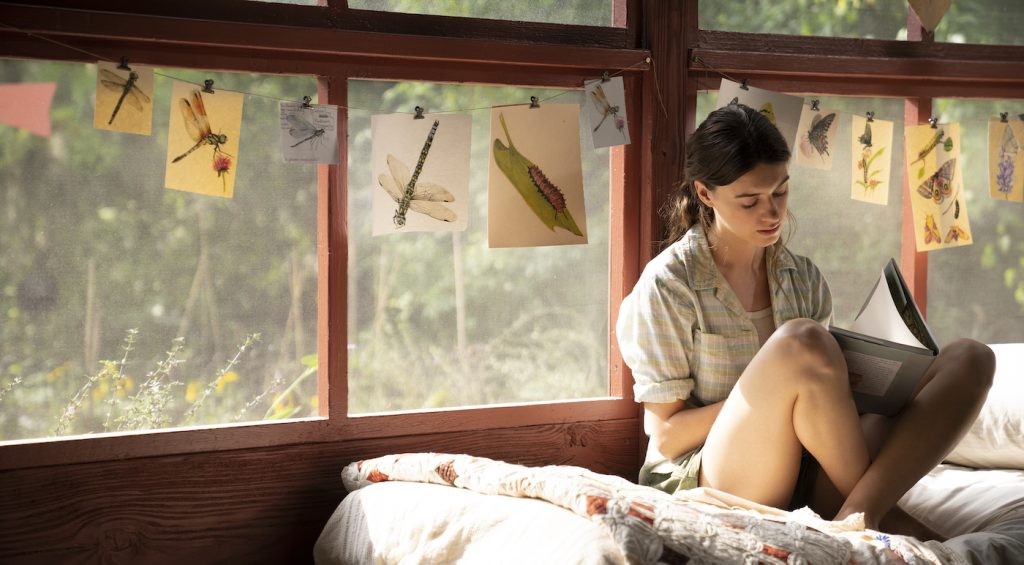
“We really wanted it to feel like it had been there for a very long time,” continues Chan. “Although these people are not people with a lot of resources, they really care about keeping it up. With the interior, there’s this feeling of layers and layers lovingly added onto it the way lots of people had to in that time period. On the exterior, it needed to feel weathered which our scene painters did a great job transforming.”
The story is told with a moving timeline. We see Kya at a young age become a woman where her quiet life is turned upside when she’s charged with the murder of an ex-boyfriend who, at one point in the story, sexually assaults her. The ongoing trial is juxtaposed with her growing career as an author where she illustrates different animals, insects, and plants living in the marsh. It’s here where we see the house transform into Kya’s home.
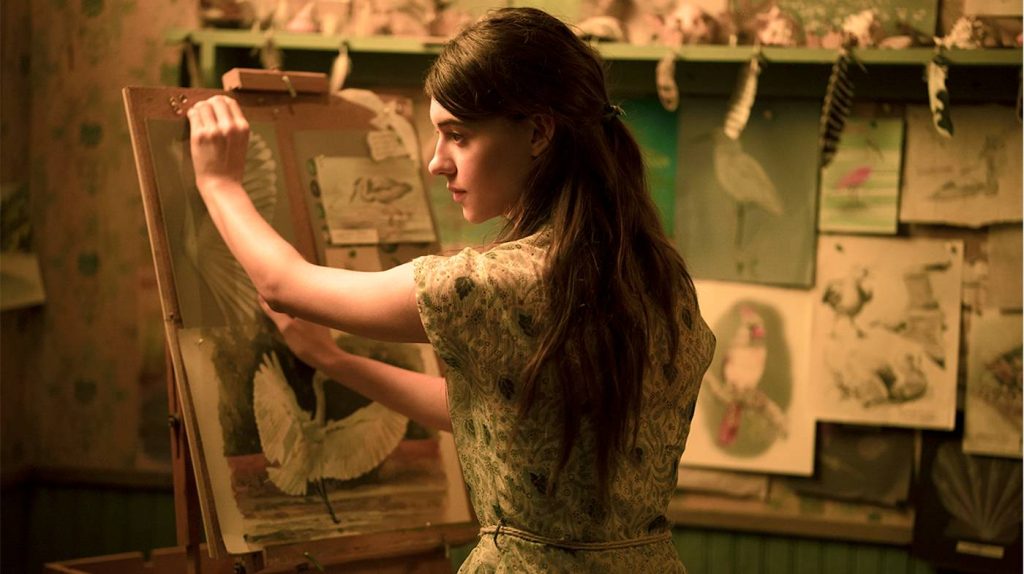
When Kya is young, Chan says, “The family home is this warm place she is in love with and then it becomes frozen. We wanted nature to come into the home. The birds, animals, the trees just became her family. When she gets her book agent and defines who she is, she starts to integrate, in a more overt way, her art and her choices that are informed by the animals and color all around her.” The production designer added touches of warmth when the family was around and made it cooler in tone when they left.
In photographing Kya’s arc, Morgan illuminated the scope of her environment by paring a large format camera sensor with a set of prototype lenses designed specifically for the movie by Panavision. “I really wanted the frame to be very expansive and pull the viewer in a subjective way,” says Morgan. “We did shoot the movie on wide lenses most of the time with the 14mm and 28mm being my favorites. We wanted to keep the camera close and be with Kya in order to draw people into her world.”
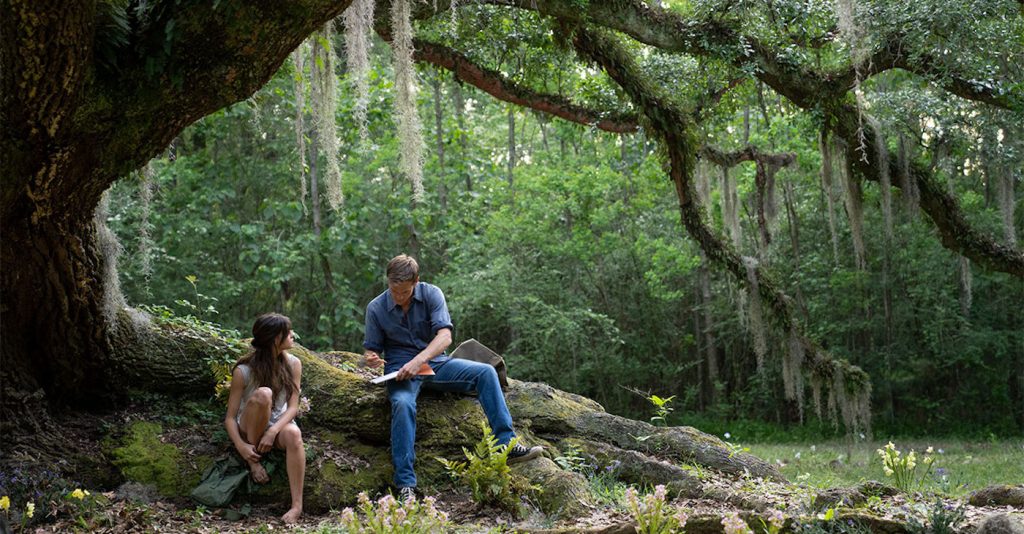
The production design of the house allowed Newman and Morgan to do just that. “The fact that Kya spends so much time on her porch you never really get away from her strong relationship with the natural world,” notes Morgan. “We shot scenes in her home like it wasn’t a set. We didn’t fly any walls. We wanted it to make it feel very real. We were able to frame Kya through doorways at certain times then move with her through the space and have this free-flowing feeling to the camera.”
Morgan leaned into camera movements that felt lyrical. Color palettes were subdued with a mix of low contrast and soft lighting while embracing ambient light. “We wanted to keep it quite naturalistic,” says the cinematographer. “Kya’s journey is relatable to so many people, we wanted to be authentic to how that would have felt in that time period and really try to do whatever we could to turn people onto her experience.”
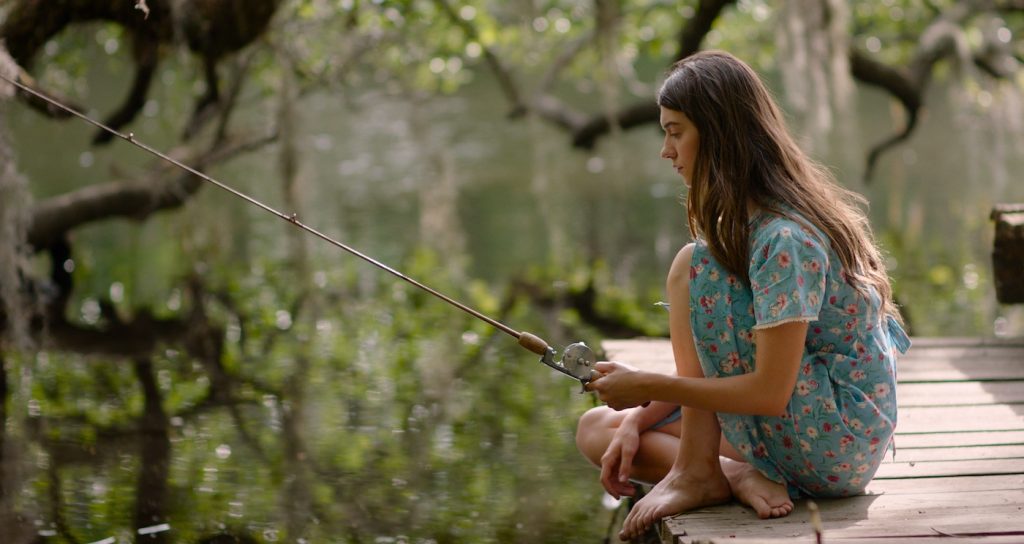
For the period when Kya was young, Morgan referenced Spielberg to compose the frame. “There is something Steven is so good at when he photographs children. He’s always looking down or up at them and just seeing the world through her eyes. It’s this young girl who is isolated and lost. We really tried to show that through the framing and then change the framing as Kya grows older and becomes more confident and at peace.”
While production scheduled scenes to make use of the natural light, the weather wasn’t always accommodating. Buckets of rain and lightning created their own challenges but the cinematographer (and the rest of the production team) got the most out of it. “When you’re on stage or doing night work, you have ultimate control of the light. When you’re doing exterior work in remote locations, it can be very hard to soften the light and make it pretty. That was my biggest challenge I think on this project and somehow we got away with a good-looking image.”
In helping to flourish in the circumstances, Morgan recalls a piece of advice from cinematographer Wally Pfister. “’If you can’t control the light, you have to make sure you have control of the frame.’ I think as cinematographers we can’t always do what we want and we have to embrace what nature gives and make the image feel the way we want with the camera or the framing.” For Where the Crawdads Sing, the visuals poetically embrace such a notion with splendid detail.
For more on Where The Crawdads Sing, check out these interview with director Olivia Newman:
“Where the Crawdads Sing” Director Olivia Newman on Capturing the Haunting Beauty of a Beloved Novel
For more on Sony Pictures film, check out these stories:
Viola Davis Reigns Supreme in “The Woman King” Trailer
Official “Bullet Train” Trailer Takes Brad Pitt on a Wild Ride
Featured image: Kya (Daisy Edgar-Jones) in Columbia Pictures’ WHERE THE CRAWDADS SING.



